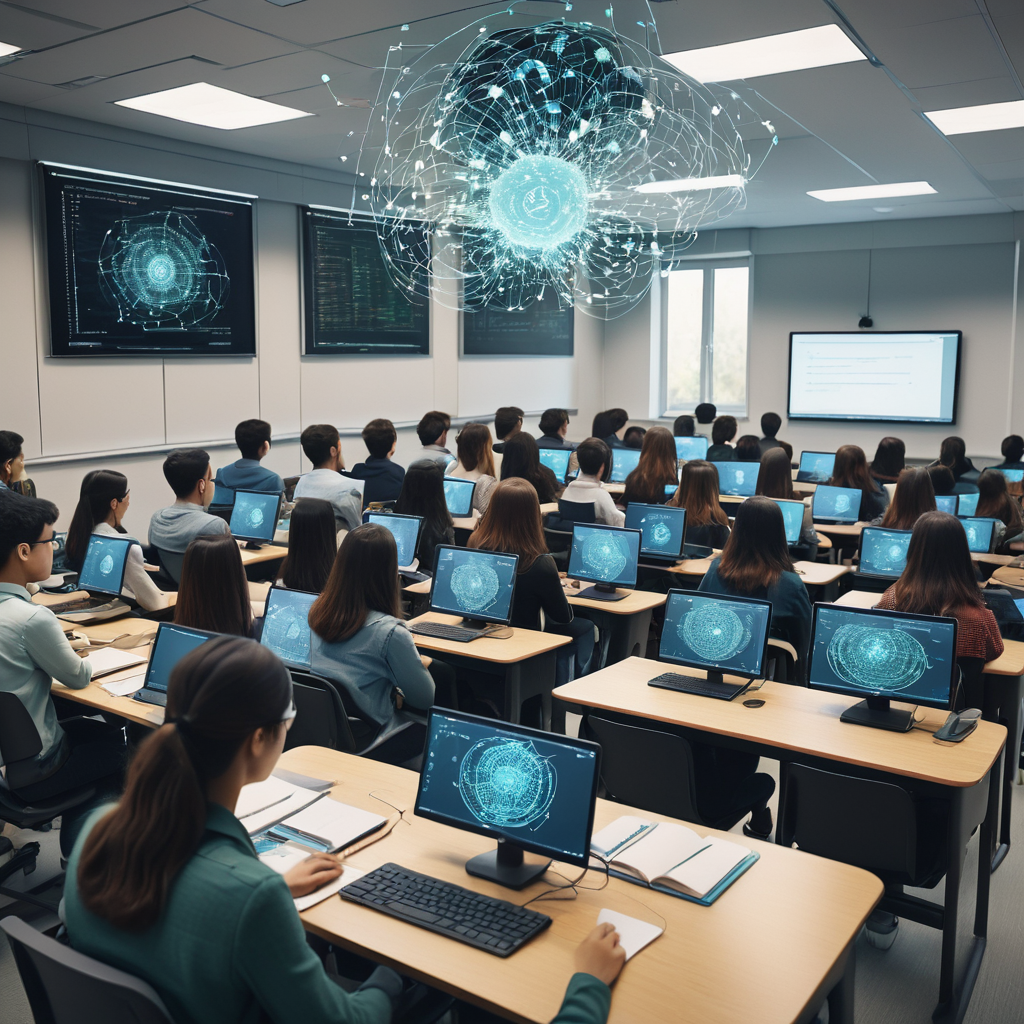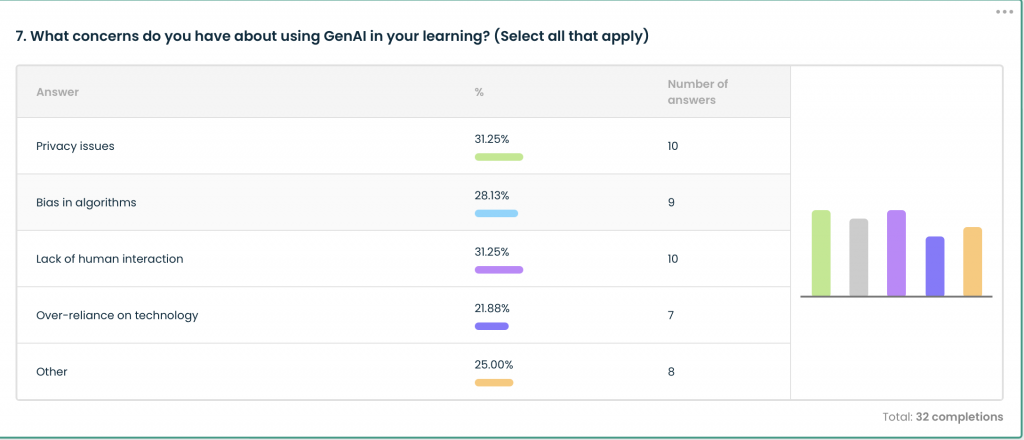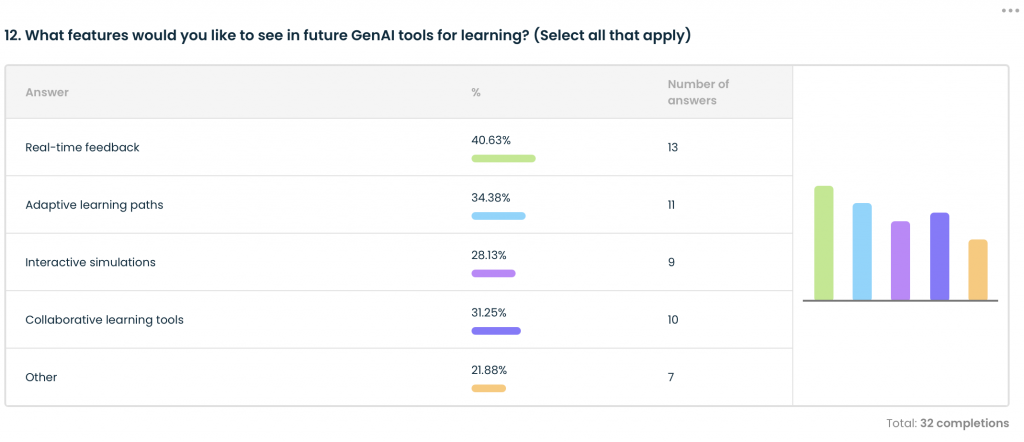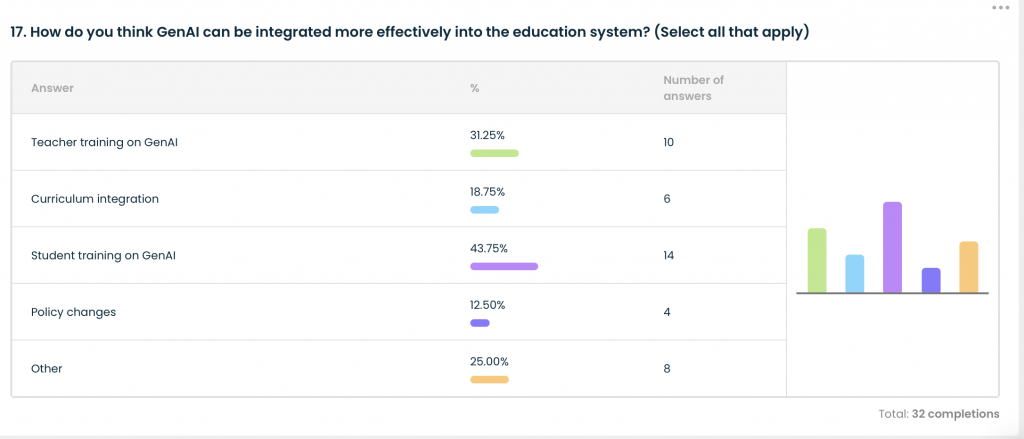
Generative AI is revolutionizing the field of education. Its potential to change the way students learn, teachers teach, and educational content is created is truly remarkable. Studies have shown that generative AI can effectively adapt to each student’s individual strengths, weaknesses, and learning pace, leading to personalized learning experiences. This individualized approach helps to increase learner engagement, knowledge retention, and overall academic performance. Generative AI also has the ability to create dynamic and interactive content that engages students, making learning more engaging and effective. Additionally, generative AI can assist in conducting assessments of complex cognitive performances. By leveraging the analytical capabilities of generative AI, educators can gain valuable insights into students’ progress and tailor their teaching strategies accordingly.
However, incorporating generative AI in education also presents several challenges. Firstly,the rapid development of AI tools in education creates a challenge in choosing the right ones, as the sheer volume and variety of options can make it difficult to identify tools that effectively address specific learning objectives and student needs. To assist educators in understanding and implementing generative AI tools in their classrooms Laurence Holt and Jacob Klein compiled a comprehensive map of generative AI in education. Secondly, AI tutors learn from data, but that data can be biased, so we need to be careful to avoid unfairness in AI-made learning materials. Thirdly, over-dependence on AI could lead to a decline in critical thinking skills and creativity in students. It’s important to find a balance, using AI as a tool to enhance learning, not replace the human element of education. Finally, integrating AI into classrooms necessitates proper training and support for educators. Teachers need to understand how to leverage AI tools effectively and assess student work generated with AI, identifying where it may have been used and ensuring students develop critical thinking and independent learning skills.
In conclusion, generative AI holds immense potential to personalize learning experiences, create engaging content, and empower educators with valuable insights. However, addressing issues of bias, maintaining a focus on critical thinking skills, and providing adequate teacher support are crucial for successful implementation. As we navigate these challenges, generative AI has the potential to transform education into a more effective, engaging, and equitable experience for all learners.
To illustrate student perspectives on this topic I’ve included three responses from a survey of first-year university students in Novi Sad regarding their experiences with Generative AI in education. Interestingly, these responses reveal that students share similar concerns with their teachers regarding the implementation of GenAi in education.



References:
- AI in Tertiary Education: A Summary of the Current State of Play (2023, September 21). AI in Tertiary Education: A Summary of the Current State of Play – Third Edition, 1-40. https://repository.jisc.ac.uk/9232/1/ai-in-tertiary-education-a-summary-of-the-current-state-of-play-september-2023.pdf
- Holt, L. (2024, March 7). A Map of Generative AI for Education: An Update to Our Map of the Current State-of-the-Art. https://medium.com/@LaurenceHolt/a-map-of-generative-ai-for-education-6598e85a172e
- Are your students ready for AI? (n.d.). Harvard Business Publishing Education. https://hbsp.harvard.edu/inspiring-minds/are-your-students-ready-for-ai
- Ouyang, F & Jiao, P. (2021). Artificial intelligence in education: The three paradigms Computers and Education: Artificial Intelligence, 2, 1-6.
- Image generated by Vesna Bulatovic through AI generation using Gencraft AI
Dragana Vukovic Vojnovic says:
Dear Vesna, great post, and thanks for the references. I couldn’t agree with you more, AI has great potential, and it could be a liability. This is why we all need to constantly top up our knowledge, and apply critical thinking.
April 25, 2024 — 7:41 am
Vesna says:
Thank you for your comment Dragana!
April 25, 2024 — 8:09 am
Johanna Karlsson says:
Thank you for this, Vesna. I fully agree!
April 25, 2024 — 9:33 am
Jonathan Phan says:
Dear Vesna, I really enjoyed this article of yours, and thank you for your hard work for demonstrating how we can take user feedback on generative AI tools to the next level!
April 25, 2024 — 4:16 pm
Vesna says:
Thank you, Jonathan, for your comment! I enjoyed working with you too!
April 25, 2024 — 4:31 pm
Jovanka Pantovic says:
Generative AI is new territory for all of us, with great potential for teaching activities. It is reassuring to know that students’ perspectives don’t differ much from ours. Thank you for sharing the survey results and references with us!
April 26, 2024 — 2:03 pm
Vesna Bulatović says:
Thank you for your comment Jovanka!
April 26, 2024 — 2:09 pm
Jonathan Lian says:
Thanks Vesna for the sharing the results of the survey with us. It is interesting to see what the university students think about AI.
May 2, 2024 — 8:29 am
Vesna says:
Thank you for your comment JL!
May 2, 2024 — 8:35 am